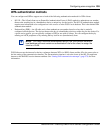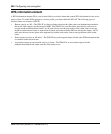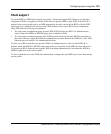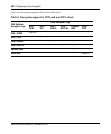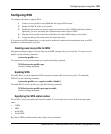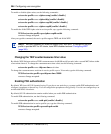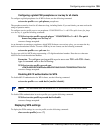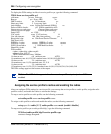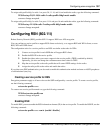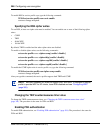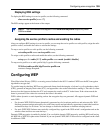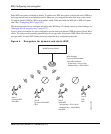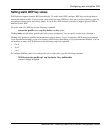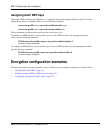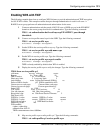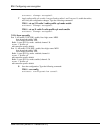
Configuring user encryption 307
Nortel WLAN—Security Switch 2300 Series Configuration Guide
To assign radio profile bldg1 to radio 1 on ports 5-8, 11-14, and 16 and enable the radios, type the following command:
WSS# set ap 5-8,11-14,16 radio 1 radio-profile bldg1 mode enable
success: change accepted.
To assign radio profile bldg1 to radio 2 on ports 11-14 and port 16 and enable the radios, type the following command:
WSS# set ap 11-14,16 radio 2 radio-profile bldg1 mode enable
success: change accepted.
Configuring RSN (802.11i)
Robust Security Network (RSN) provides 802.11i support. RSN uses AES encryption.
You can configure a service profile to support RSN clients exclusively, or to support RSN with WPA clients, or even
RSN, WPA and WEP clients.
The configuration tasks for a service profile to use RSN are similar to the tasks for WPA:
1 Create a service profile for each SSID that will support RSN clients.
2 Enable the RSN IE in the service profile.
3 Enable the cipher suites you want to support in the service profile. (TKIP is enabled by default.)
Optionally, you also can change the countermeasures timer value for TKIP.
4 Map the service profile to the radio profile that will control IEEE settings for the radios.
5 Assign the radio profile to the radios and enable the radios.
If you plan to use PSK authentication, you also need to enable this authentication method and enter an ASCII passphrase
or a hexadecimal (raw) key.
Creating a service profile for RSN
Encryption parameters apply to all users who use the SSID configured by a service profile. To create a service profile,
use the following command:
set service-profile name
To create a new service profile named rsn, type the following command:
WSS# set service-profile rsn
success: change accepted.
Enabling RSN
To enable RSN, you must enable the RSN information element (IE) in the service profile. To enable the RSN IE, use the
following command:
set service-profile name rsn-ie {enable | disable}



